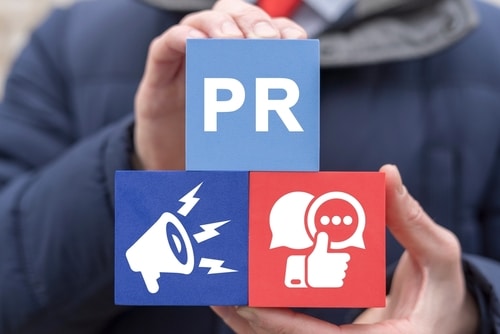Is the Press Release as we know it, dead?
The world of media has evolved rapidly over the last few years. With the advent of social media, blogs, and other digital platforms, traditional media outlets have been forced to adapt in order to stay relevant. As a result, many now ask whether the press release, as we know it, is dead and how news outlets are future-proofing the press release for the digital age.
When a Guardian journalist recently put out a tweet asking freelance journalists to pitch feature ideas for the science and technology section of The Observer, naturally, given the interest in AI and ChatBots, many pitches focused on AI and several ideas received from an engineering student, stood out. On closer inspection, the journalist’s colleague said his pitch ideas had, “The tone of a life insurance policy document”. AI generated pitches and press releases seem to be getting harder to tell from the old-fashioned human kind, though, so should PR consultants and inhouse marketers be worried about their jobs?
Interest in AI has now resulted in a heated debate about whether AI is a force for good or not
Cloud based access to incredible machine intelligence offers humans and businesses huge potential to accelerate learning, development, and output. Generative AI generates new and novel outputs. It has removed the friction between imagining something, describing it in natural language or drawing a picture of it and it will be made real before our very eyes.
We have augmented humans, not by asking Google Search, but by asking a mentor
The launch of Chat GPT a Natural Language Processing (NLP) AI tool by OpenAI seems to have ended Google’s long-standing dominance. So, next, Google released Bard, its proprietary AI.
This is a live economic experiment of a magnitude that we’ve never seen before. 1.24 billion people are just about to smash into generative AI as Google brings out AI based products such as Med-PaLM, which performed better in medical exams than medical students and Microsoft, thanks to its relationship with OpenAI, is about to incorporate it into its Office 365, the largest software application on earth.
That’s what GPT-4, the language model, has done. It’s read everything on the internet and a huge amount of all the text that ever existed and it’s discerned deep, underlying patterns in the structure of language
It doesn’t have to be so rule bound and we don’t have to teach an AI machine the rules. We are at the stage where machine learning can discern patterns that emerge out of complex situations. That’s the big revolution that is machine learning – neural networks and, generally, transformer models – that are fuelling things like GPT-4 and are built on top of these neural networks where you can throw a huge amount of unstructured data at the AI model, tell it nothing about that data or the rules, and it will go and look at it and draw down rules of its own from incredibly complex, nuanced, submerged patterns existing within that data.
The computer doesn’t have imagination, and that’s where the human comes in. Humans are going to be smarter and have more longevity from the knowledge-based economy. Wearable devices will get humans closer to neural links. So, we will have health, longevity, intelligence, and robots.
So, it’s early days. If the ChatBot in question was more intelligent, it might have suggested that The Guardian journalist put the suspect content through OpenAI’s text classifier. Material can sound plausible but may not be fact-checked and may fall at other hurdles, such as biased comment which is not acceptable.
For the foreseeable, it seems as if humans remain very much in control and rightly so. Our media savvy newshounds at Peppermint Soda say the (human) press release is still very much alive!
Read all about it...
LATEST NEWS

How Startups Can Earn Big Media Coverage with Small Budgets

The Role of PR in the Health Tech RevolutionTransform Your Press Release


